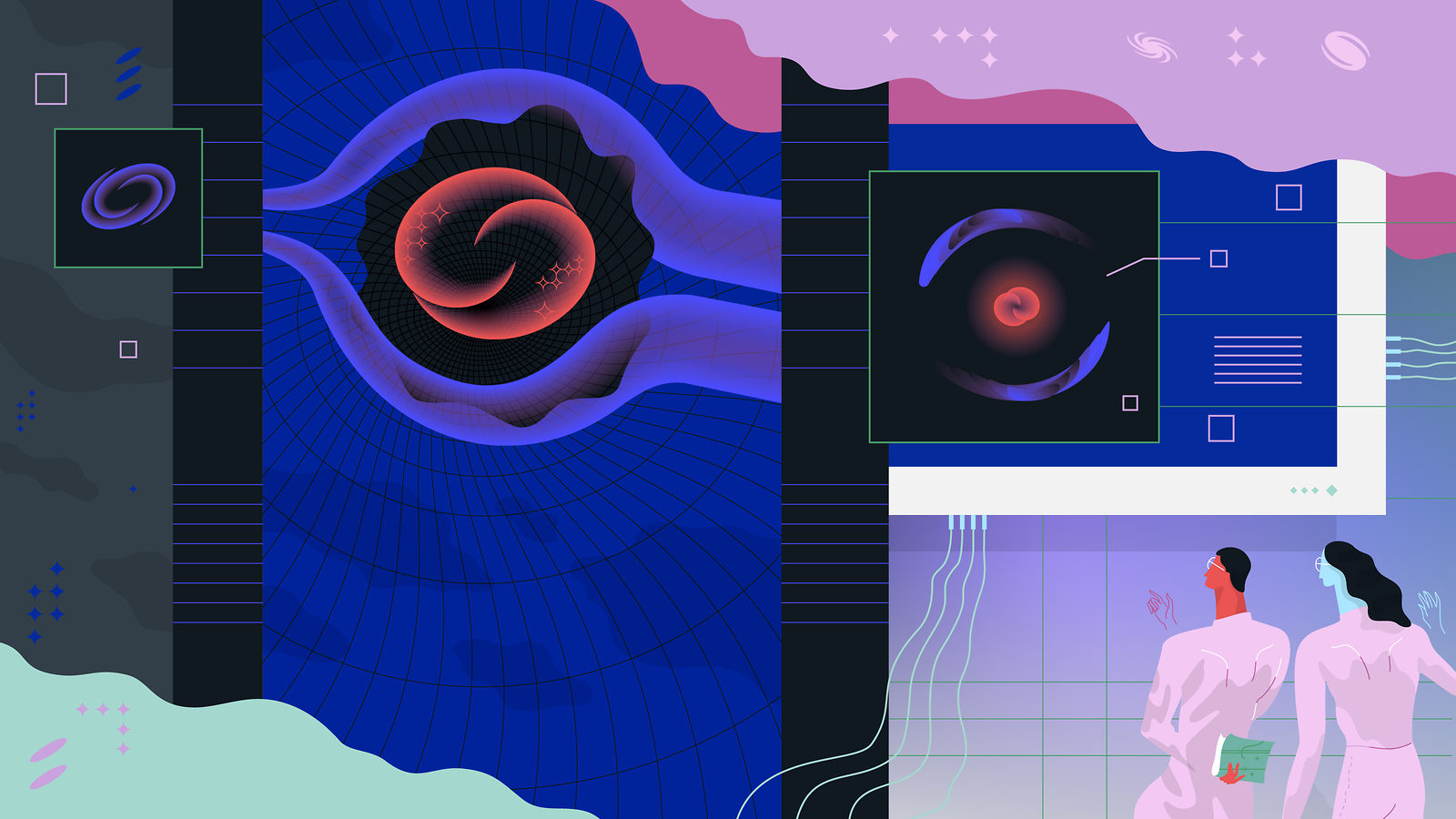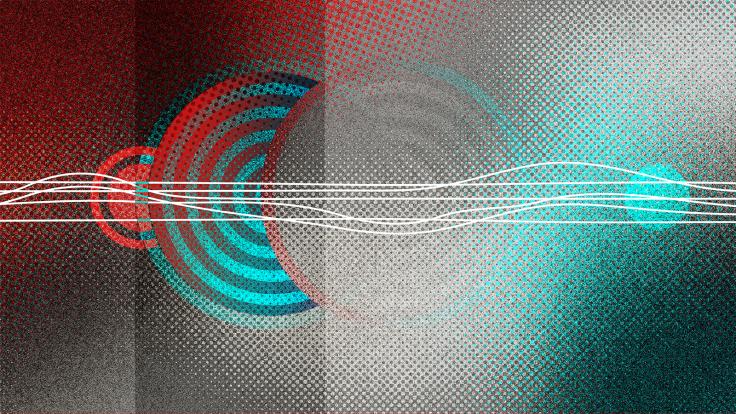On March 29, 1979, high in the Quinlan Mountains in the Tohono O’odham Nation in southwestern Arizona, a team of astronomers at Kitt Peak National Observatory was scanning the night sky when they saw something curious in the constellation Ursa Major: two massive celestial objects called quasars with remarkably similar characteristics, burning unusually close to one another.
The astronomers—Dennis Walsh, Bob Carswell and Ray Weymann—looked again on subsequent nights and checked whether the sight was an anomaly caused by interference from a neighboring object. It wasn’t. Spectroscopic analysis confirmed the twin images were actually both light from a single quasar 8.7 billion light-years from Earth. It appeared to telescopes on Kitt Peak to be two bodies because its light was distorted by a massive galaxy between the quasar and Earth. The team had made the first discovery of a gravitational lens.
Since then, gravitational lenses have given us remarkable images of the cosmos and granted cosmologists a powerful means to unravel its mysteries.
“Lensing is one of the primary tools we use to learn about the evolution of the universe,” says Mandeep Gill, an astrophysicist at Kavli Institute for Particle Astrophysics and Cosmology (KIPAC), Stanford. By observing the gravitational lensing and redshift of galaxy clusters, he explains, cosmologists can determine both the matter content of the universe and the speed at which the universe is expanding.
Gravitational lensing was predicted by Einstein’s theory of general relativity. General relativity posited that massive objects like the sun actually bend the fabric of spacetime around them. Like a billiard ball sinking into a stretched-out rubber sheet, a massive object creates a depression around it; it’s called a "gravity well." Light passing through a gravity well bends with its curves.
When an object is really immense—such as a galaxy or galaxy cluster—it can bend the path of passing light dramatically. Astronomers call this “strong lensing.”
Strong lensing can have remarkable effects. A distant light source arranged in a straight line with a massive body and Earth—a configuration called a syzygy—can appear as a halo around the lensing body, an effect known as an “Einstein ring.” And light from one quasar in the constellation Pegasus bends so much by the time it reaches Earth that it looks like four quasars instead. Astronomers call this phenomenon a “quad lens,” and they’ve named the quasar in Pegasus “the Einstein Cross.”
Most gravitational lensing events are not so dramatic. Any mass will curve the spacetime around it, causing slight distortions to passing light. While this weak lensing is not apparent from a single observation, taking an average from many light sources allows observers to detect weak lensing effects as well. The overall distribution of matter in the universe has a lensing effect on light from distant galaxies, a phenomenon known as “cosmic shear.”
“A cosmic shear measurement is incredibly meticulous as the effect is so small, but it holds a wealth of information about how the structure in the universe has evolved with time,” says Alexandra Amon, an observational cosmologist at KIPAC who specializes in weak lensing.
Strong and weak gravitational lensing are both important tools in the study of dark matter and dark energy, the invisible stuff that together make up 96 percent of the universe. There is not enough visible mass in the universe to cause all of the gravitational lensing that astronomers see; scientists think most of it is caused by invisible dark matter. And how all of that matter moves and changes over time is thought to be affected by a mysterious “force” (scientists aren’t really sure what it is) pushing our universe to expand at an accelerating pace: dark energy. Studying gravitational lensing can help astrophysicists track the universe’s growth.
“Strong gravitational lensing can give you a lot of cosmology—from time delays,” Gill says. “From a very far away quasar, you can get multiple images that have followed different light paths. Because they've followed different paths, they will get to you at different times. And that time delay depends on the geometry of the universe.”
The Dark Energy Survey is one of several experiments using gravitational lensing to study dark matter and dark energy. DES scientists are using the Cerro Tololo Inter-American Observatory in Chile to perform a 5000-square-degree survey of the southern sky. Along with other measurements, DES is searching for weak lensing and cosmic shear effects of dark matter on distant objects.
The Large Synoptic Survey Telescope, currently under construction in Chile, will also assess how dark matter is distributed in the universe by looking for gravitational lenses, among other things.
“The LSST will see first light in the next couple of years,” Amon says. “As this telescope charts the southern sky every few nights, it’s going to bombard us with data—literally too much to handle—so a lot of the work right now is building pipelines that can analyze it.”
Astronomers expect LSST to find 100 times more galaxy-scale strong gravitational lens systems than are currently known.
“The ongoing lensing surveys—that is, the Kilo-Degree Survey, Hyper Suprime-Cam and Dark Energy Survey—are doing high-precision and high-quality analyses, but they are really training grounds compared to what we will be able to do with LSST,” Amon says. “We are stepping up from measuring the shapes of tens of millions of galaxies to a billion galaxies, building the largest, deepest map of the Southern sky over 10 years.”
Surprisingly, these enormous studies of cosmic distortions may bring the make-up of our universe into focus.













